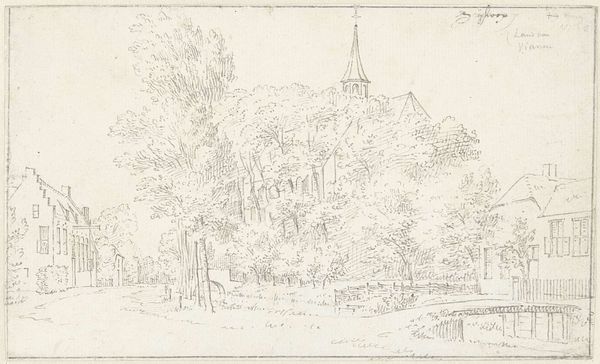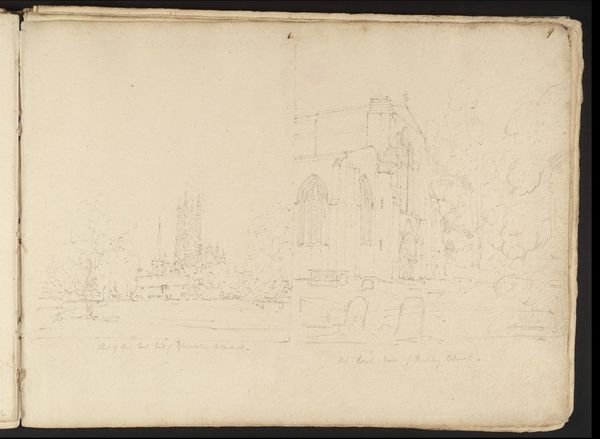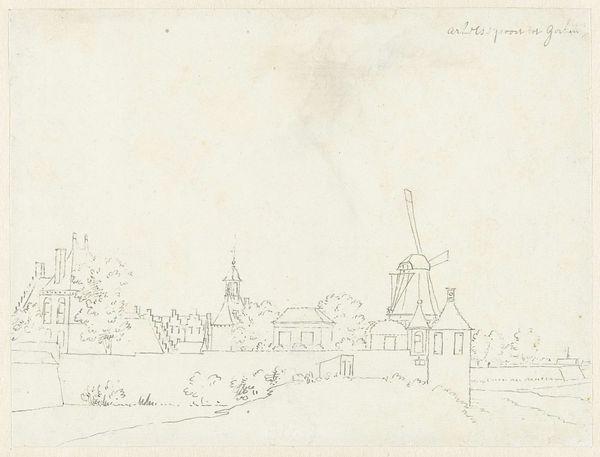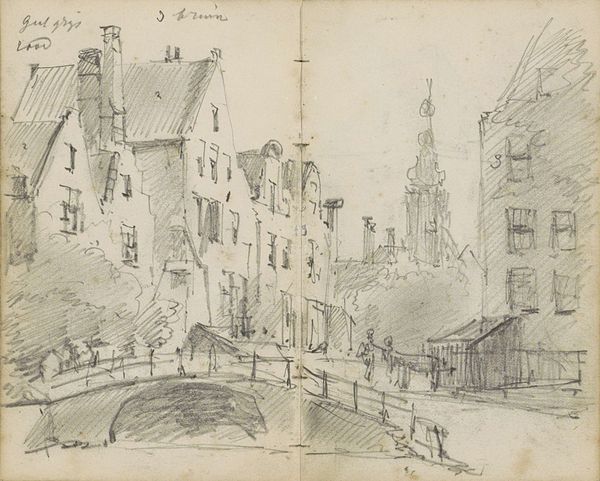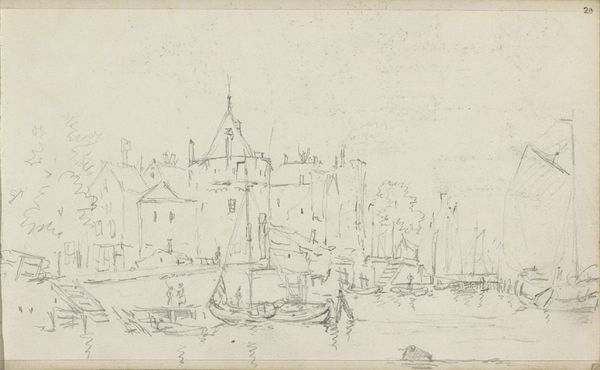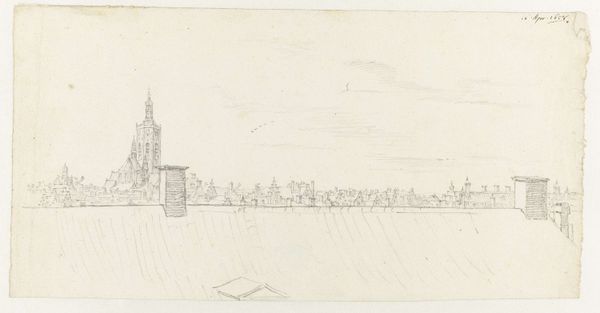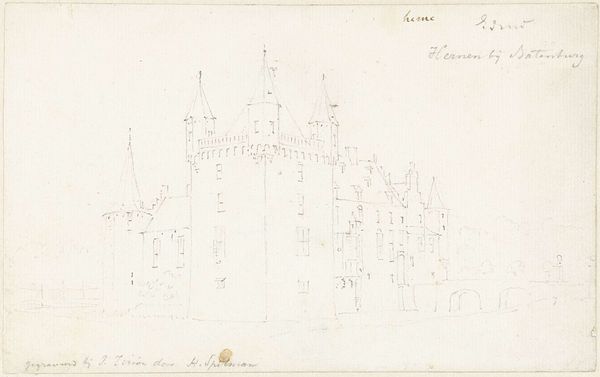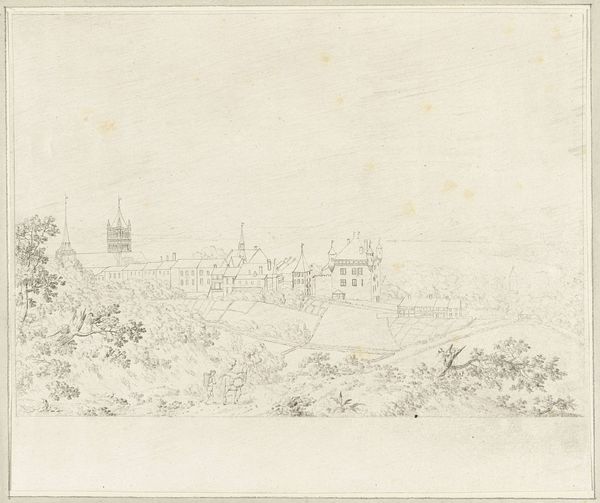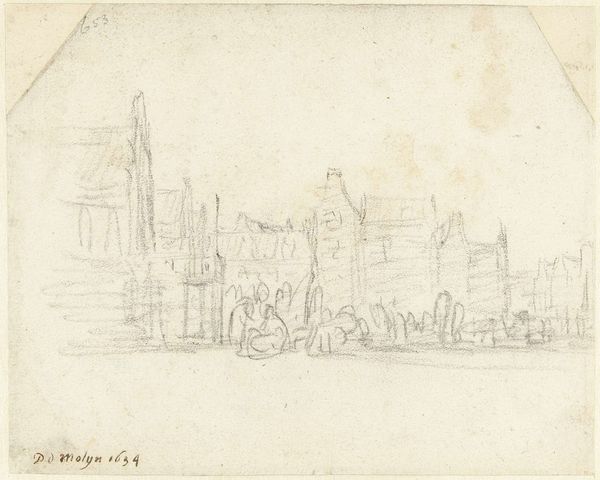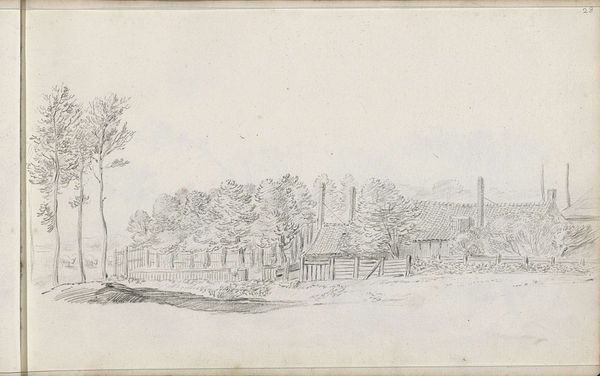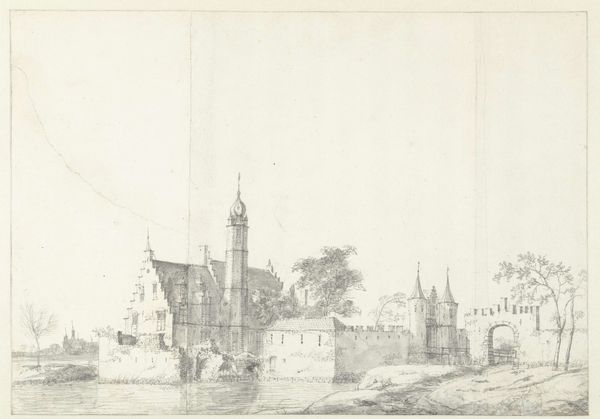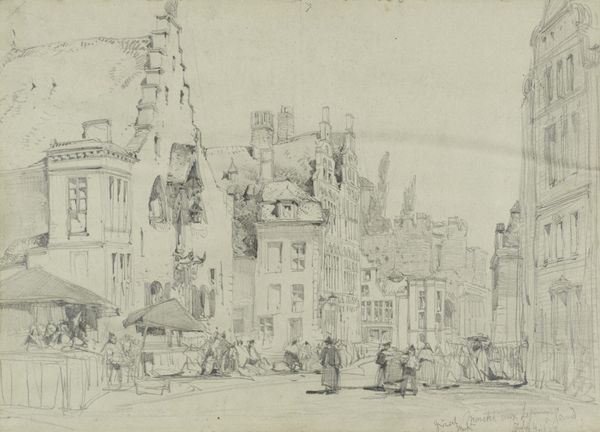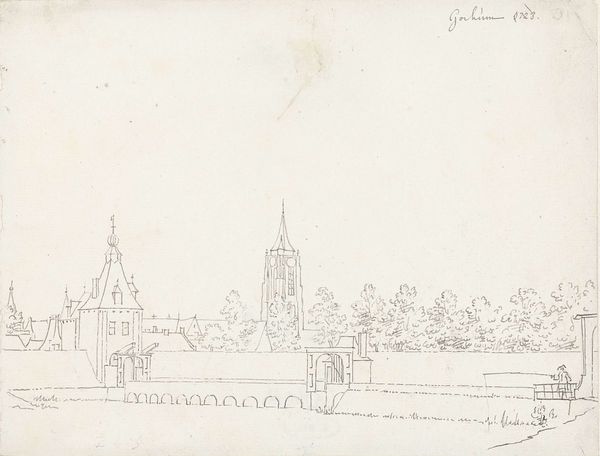
drawing, paper, ink
#
drawing
#
baroque
#
dutch-golden-age
#
landscape
#
paper
#
ink
#
cityscape
Dimensions: height 127 mm, width 203 mm
Copyright: Rijks Museum: Open Domain
Editor: This is Cornelis Pronk’s “Gezicht in het dorp Aalsmeer,” possibly from around 1733 to 1736. It’s an ink drawing on paper, a seemingly simple cityscape. I’m struck by its documentary feel. It's like a snapshot of a moment in time, but meticulously rendered. How do you interpret the public role of art like this? Curator: It’s tempting to see this as a straightforward topographical record, but Pronk, while aiming to depict Aalsmeer accurately, was also very aware of his patronage. Consider who was commissioning and viewing these kinds of drawings. It speaks to a growing mercantile class eager to celebrate and document the Dutch Republic’s prosperity and local identity. Look at the prominent church steeple, a sign of established social order. Who do you think this imagery served to please and/or reassure? Editor: I guess the wealthier citizens, those who would have the resources to commission such a work, or those whose wealth would allow travel. I see a quaint, safe community, certainly a good thing if you're advertising the Dutch Golden Age. Curator: Precisely. Also, think about how prints made after drawings like this circulated. Did they reinforce a unified Dutch identity, or were there tensions and exclusions within this seemingly idyllic village scene? What is emphasized and what is omitted contributes to the power dynamics embedded in the image itself. Editor: So, while appearing to be a neutral depiction, the image actively participates in shaping perceptions of Dutch society at that time? Even promoting national identity and social class in subtle ways. Curator: Exactly! By examining the social context, we realize it's more than just a drawing; it's a cultural statement, perhaps a form of placemaking. Editor: That’s given me a completely different way to see it. I went from seeing this as just a record to appreciating it as an insight into a historical narrative. Curator: Indeed, these seemingly simple images are full of hidden agendas when you analyze the dynamics between the subject, the artist and his contemporary audience.
Comments
No comments
Be the first to comment and join the conversation on the ultimate creative platform.
